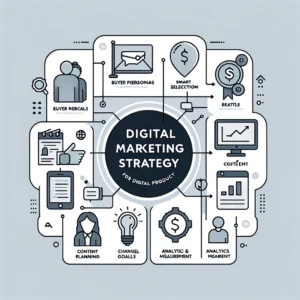The concept of a business model has transcended its traditional boundaries, evolving into a pivotal factor for success. In this expert-level guide, we delve deep into the intricate nature of business models, particularly focusing on their transformative role in the modern business landscape. Entrepreneurs today are not just business operators; they are innovators and disruptors, shaping industries with groundbreaking models.
As we navigate through this comprehensive exploration, we uncover the historical context of business models, their metamorphosis under digital and technological influences, and their profound impact on corporate performance and sustainability. We also dissect the intricate relationship between entrepreneurial cognition and business model innovation, highlighting how strategic thinking and cognitive processes shape business success.
This article serves as a beacon for seasoned entrepreneurs,
guiding them through advanced strategies for designing and implementing innovative business models. It addresses the challenges encountered in the process of innovation and provides actionable insights, backed by case studies and recent advancements in the field.
Through this guide, entrepreneurs will gain a deeper understanding of the complexities of business model innovation and acquire the tools and knowledge to steer their ventures toward unprecedented growth and success.
The Evolving Role of Business Models in Entrepreneurship
The landscape of entrepreneurship has witnessed a dramatic transformation over the past few decades, predominantly influenced by the relentless advancement of technology and the evolution of the global information economy. This shift has not only altered the way businesses operate but has also redefined the essence of business models.
Historical Context and Evolution of Business Models
The concept of a business model is not static; it has evolved significantly since its inception. Originally, business models were primarily focused on straightforward strategies for revenue generation and value delivery. However, as the business environment grew more complex and interconnected, the nature of these models began to change. The rise of digital technologies, such as the Internet of Things (IoT), big data, and artificial intelligence, has introduced new dimensions and possibilities, demanding more innovative and flexible models. This evolution reflects a shift from traditional, linear approaches to more dynamic, customer-centric, and value-driven models.
Impact of Digital Technologies and Information Economy on Business Models
The digital age has brought about a paradigm shift in business models. The rapid adoption of digital technologies like AI, 3D printing, and IoT has not only facilitated the creation of new products and services but has also revolutionized the way businesses interact with customers and manage operations. These technologies have enabled businesses to offer more personalized experiences and engage in real-time data-driven decision-making. Furthermore, the information economy has fueled the growth of platform-based models, where value is created by facilitating exchanges between different groups, as seen in companies like JD.com and Didi.
Case Studies: Transformative Business Models in Action
Several enterprises have risen to prominence by adopting novel business models tailored to the digital age. For instance, Didi, a leading player in the transportation sector, leveraged the power of the internet to disrupt traditional taxi services. Similarly, JD.com redefined retail by implementing a unique B2C model, capitalizing on e-commerce trends. These examples illustrate how innovative business models can not only adapt to but also capitalize on the changes brought by the digital revolution.
Entrepreneurial Cognition and Business Model Innovation

In the realm of entrepreneurship, the cognitive processes of entrepreneurs play a crucial role in shaping and innovating business models. This section delves into how entrepreneurial cognition influences business model innovation (BMI), offering insights into the mental frameworks and strategic thinking that drive successful entrepreneurial ventures.
Understanding Entrepreneurial Cognition: Configuration, Willingness, and Ability
Entrepreneurial cognition encompasses three key dimensions: configuration, willingness, and ability. Each dimension contributes uniquely to the formulation and evolution of business models.
- Configuration Cognition: This refers to an entrepreneur’s knowledge structure regarding resources and assets essential for enterprise development. Entrepreneurs use this cognition to identify and leverage unique resources, leading to the creation and development of innovative business models. Elements such as the protection of entrepreneurial ideas, construction of networks, acquisition of entrepreneurial knowledge, and exclusive entrepreneurial skills fall under this category.
- Willingness Cognition (Wic): This dimension involves the entrepreneur’s commitment to pursue and execute entrepreneurial activities. It encompasses the entrepreneur’s ability to identify and seize opportunities, tolerate commitment, and make trade-offs in the face of risks and uncertainties. This cognition plays a critical role in transforming opportunities into tangible business models.
- Ability Cognition (Abc): This pertains to the entrepreneur’s capacity to mobilize skills, knowledge, values, and attitudes in support of new venture creation and growth. It includes the entrepreneur’s experience, ability to diagnose entrepreneurial tasks, situational knowledge, and the matching of capabilities with opportunities. This dimension is vital in driving innovation and maintaining a competitive edge in business models.
Strategic Sensitivity in Business Model Decision-Making
Strategic Sensitivity (SSE) refers to an entrepreneur’s acumen in perceiving changes in the internal and external environment and responding aptly to these changes. It plays a crucial intermediary role in linking entrepreneurial cognition with BMI. Entrepreneurs with high SSE are adept at interpreting market signals, adapting their strategies accordingly, and innovating their business models to stay ahead in a competitive market. The ability to integrate cognition with strategic sensitivity is paramount for successful BMI, as it enables entrepreneurs to navigate the complexities of the business landscape with agility and foresight.
Business Model Innovation (BMI) and Corporate Performance
The concept of Business Model Innovation (BMI) is integral to the growth and sustainability of enterprises, especially in an environment marked by rapid technological advancements and shifting market dynamics. This section explores the relationship between BMI and enterprise performance and the antecedent variables that influence BMI in both new ventures and established businesses.
Relationship Between BMI and Enterprise Performance
BMI has been identified as a significant catalyst for enhancing enterprise performance. It involves the reinvention or reconfiguration of a business’s value proposition, revenue model, and operational processes, leading to improved efficiency, competitive advantage, and market positioning. Research indicates that BMI can lead to substantial improvements in performance metrics such as revenue growth, market share expansion, and profitability. It is increasingly being recognized as a crucial element for businesses seeking to maintain relevance and achieve long-term success in today’s rapidly evolving marketplace.
Exploring Antecedent Variables for Successful BMI
Understanding the drivers of successful BMI is essential for businesses aiming to innovate their models effectively. Research has identified several internal and external antecedent variables:
- Internal Antecedents: These include factors such as the strategic flexibility of an organization, the integration of enterprise resources, the influence of the senior management team, organizational culture, and structure. Strategic flexibility and resource integration capabilities, in particular, are critical for resolving the challenges posed by changes in the business environment.
- External Antecedents: These involve elements like technological innovation, market environment dynamics, and stakeholder influences, including customers, suppliers, and competitors. Market orientation and understanding customer preferences are key in shaping business models that resonate with current market needs and opportunities.
This exploration of BMI’s impact on corporate performance and its driving factors provides valuable insights for entrepreneurs and business leaders seeking to innovate and excel in their respective industries.
Advanced Strategies for Business Model Design and Implementation
In today’s fast-paced and technology-driven business environment, adopting advanced strategies for business model design and implementation is crucial. This section explores the integration of cutting-edge technologies and sustainability principles into business models, providing a roadmap for entrepreneurs to innovate and thrive.
Leveraging AI and Machine Learning in Business Model Formulation
Artificial Intelligence (AI) and Machine Learning (ML) are revolutionizing the way businesses conceptualize and implement their models. These technologies enable entrepreneurs to harness data-driven insights, predict market trends, and personalize customer experiences. AI and ML can be employed to optimize supply chains, enhance decision-making processes, and create innovative products and services. By incorporating these technologies, businesses can build more intelligent, responsive, and customer-centric models, ensuring a competitive edge in their respective industries.
Incorporating Sustainability and Circular Economy Principles
The shift towards sustainability and the principles of the circular economy is becoming increasingly important in business model innovation. This approach involves designing models that are not only economically viable but also environmentally sustainable and socially responsible. Circular business models focus on reducing waste, maximizing resource efficiency, and creating closed-loop systems where products and materials are reused or recycled. By adopting these principles, businesses can meet the growing consumer demand for sustainability, comply with regulatory requirements, and contribute positively to environmental preservation.
Overcoming Challenges in Business Model Innovation
Innovating business models is not without its challenges. Entrepreneurs often face various obstacles in the process of developing and implementing new business models. This section examines common challenges in business model innovation and provides strategies to overcome them effectively.
Identifying and Addressing Barriers to Innovation
One of the primary challenges in business model innovation is the resistance to change, both internally within the organization and externally in the market. Internal resistance often stems from a lack of understanding, fear of the unknown, or attachment to the status quo. To overcome this, clear communication, involving stakeholders in the innovation process, and demonstrating the tangible benefits of the new model are essential. Externally, market dynamics, customer preferences, and regulatory hurdles can pose significant challenges. Conducting thorough market research, engaging with customers, and staying abreast of regulatory changes can help in navigating these challenges effectively.
Case Study Analysis of Successful Overcome Challenges
Analyzing case studies of companies that have successfully innovated their business models can provide valuable lessons. For instance, companies like Apple and Amazon have continuously evolved their business models to stay ahead of market trends and technological advancements. Their success stories highlight the importance of a customer-centric approach, adaptability, and the willingness to embrace new technologies. These case studies serve as a testament to the fact that, while challenging, business model innovation can lead to remarkable growth and industry leadership.
Conclusion
As we reach the end of this comprehensive exploration into the world of business model innovation, a few key insights stand out. The journey of innovating a business model is complex and multifaceted, requiring a deep understanding of current market trends, technological advancements, and consumer behaviors. It also demands a robust grasp of entrepreneurial cognition and the strategic application of advanced business strategies.
Entrepreneurs today must navigate a landscape that is rapidly evolving, shaped by digital transformation and a growing emphasis on sustainability. The integration of AI and machine learning into business models, along with the adoption of circular economy principles, represents the future of business innovation. These approaches not only offer competitive advantages but also align with the global shift towards more sustainable and socially responsible business practices.
However, the path to successful business model innovation is not without its challenges. Entrepreneurs must be prepared to face and overcome internal and external barriers, drawing lessons from those who have successfully navigated this terrain.
Looking forward, the importance of business model innovation in achieving sustainable growth and maintaining a competitive edge in the marketplace cannot be overstated. As entrepreneurs and business leaders embrace these dynamic changes, they open up new avenues for innovation, profitability, and societal impact.
The future of entrepreneurship is vibrant and promising, with endless opportunities for those willing to innovate and adapt. By staying informed, agile, and responsive to the ever-changing business environment, entrepreneurs can lead their ventures to new heights of success.




